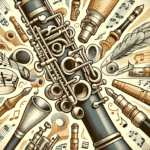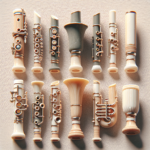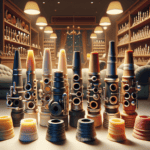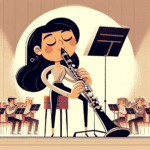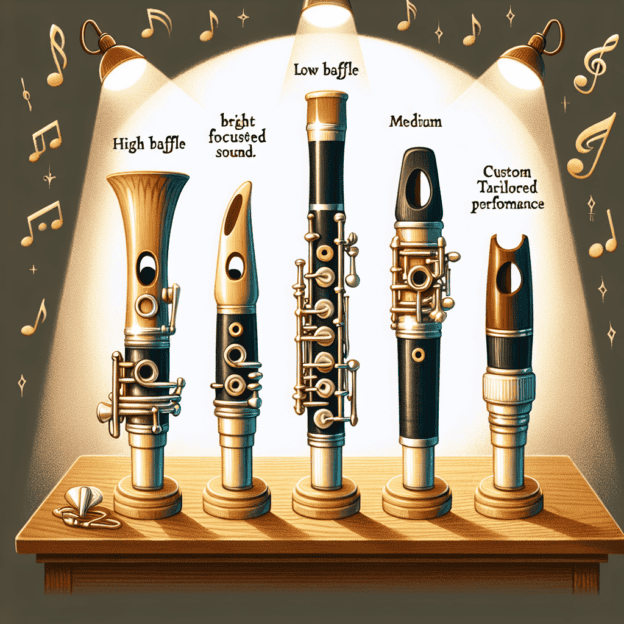The clarinet's mouthpiece plays a crucial role in shaping the instrument's sound. The baffle, a key component of the mouthpiece, greatly influences tone and playability. For clarinetists aiming to refine their skills, understanding the various mouthpiece baffle types is valuable. This guide explores different clarinet mouthpiece baffles, their impact on sound, and how they affect the overall playing experience.
What is a Mouthpiece Baffle?
The baffle is the internal area of a clarinet mouthpiece that guides the airflow. Its design affects the sound's character, clarity, and projection. The baffle's shape can impact everything from the brightness of the tone to the ease of achieving certain articulations.
Types of Mouthpiece Baffles
Mouthpiece baffles come in several designs, each offering a distinct playing experience. Let's examine some common types:
| Baffle Type | Sound Characteristics | Ideal For |
|---|---|---|
| High Baffle | Bright, focused, strong projection | Jazz, loud ensembles |
| Low Baffle | Mellow, warm, rich | Classical, lyrical solos |
| Medium Baffle | Balanced, versatile | Multi-genre players |
| Custom Baffle | Tailored to player's needs | Specialized performers |
1. High Baffle
High baffle designs feature a steep angle leading to the mouthpiece tip. They're known for enhancing sound brightness and projection. Players in louder ensembles often prefer high baffles to ensure their tone is distinct in the mix.
- Characteristics: Bright and focused sound, good projection.
- Recommended For: Jazz performers or orchestra players needing a clear sound.
2. Low Baffle
Low baffle mouthpieces offer a mellower, warmer sound profile. With a gentle slope to the tip, they produce a rich, darker tone. Players who prefer a smooth and lyrical sound often choose a low baffle.
- Characteristics: Warm and rounded sound, less projection.
- Recommended For: Classical musicians or soloists performing lyrical passages.
3. Medium Baffle
Medium baffles provide a balanced approach, combining qualities of high and low baffles. They're versatile and adapt well to various musical styles. Players who frequently switch between genres might find a medium baffle suits their needs best.
- Characteristics: Balanced tone, versatile across genres.
- Recommended For: General performers or those playing various styles without extreme tonal requirements.
4. Custom Baffles
Some manufacturers offer custom baffle designs tailored to specific player preferences. These allow musicians to fine-tune their mouthpiece characteristics for desired sound qualities. Collaborating with a mouthpiece maker can result in a unique sound that reflects personal style.
- Characteristics: Tailored performance and sound specificity.
- Recommended For: Players seeking a unique sound or those advancing their skills to a high level.
How to Choose the Right Baffle for You
Picking the ideal mouthpiece baffle depends on your playing style and desired sound. Consider these tips when making your decision:
- Experiment: Test different mouthpieces with various baffle types to see how they affect your playing. Renting or borrowing mouthpieces is a good way to explore options.
- Consider Your Repertoire: Think about the music you typically play. Brighter sounds may suit jazz pieces, while warmer tones might complement classical solos.
- Assess Your Technique: If you have difficulties with tone production or articulations, consider whether your current baffle type might be contributing to these issues.
Maintenance and Care
Proper maintenance of your mouthpiece is important, regardless of the baffle type. Regular cleaning and storage practices will extend its lifespan and maintain sound quality:
- Rinse the mouthpiece after each use to remove moisture and residue.
- Use a mouthpiece brush for thorough cleaning, especially in the baffle area.
- Store the mouthpiece in a protective case to prevent damage.
Conclusion
The choice of mouthpiece baffle can greatly influence your clarinet playing experience. Through exploration and practice, you'll discover the baffle type that best enhances your sound, projection, and overall performance. Whether you favor a bright, cutting tone or a warm, rich sound, understanding baffle types will guide you to an informed decision.


